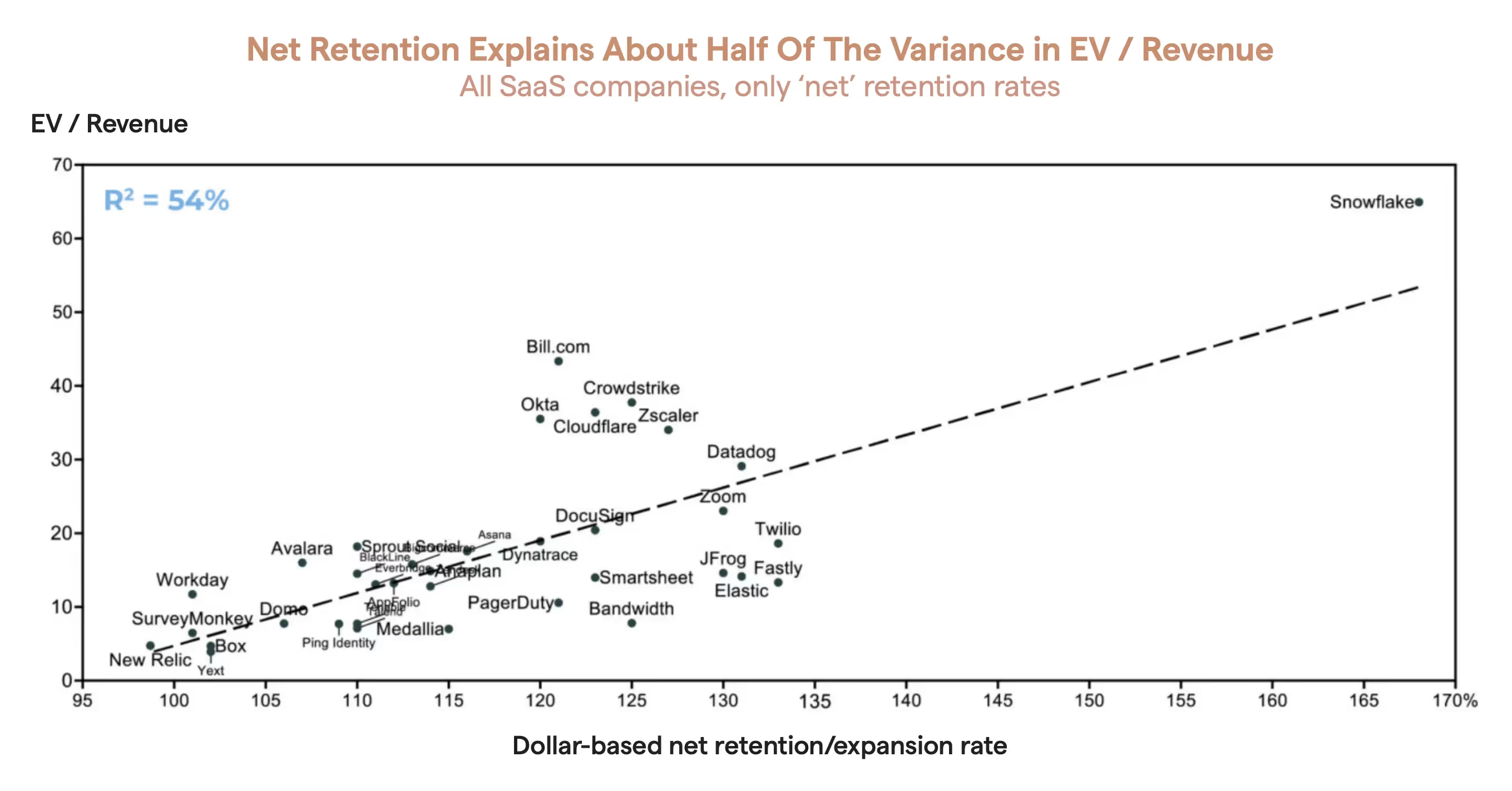 Blog
Blog Why Your Budgeting Narrative Must Change
Why Your Budgeting Narrative Must ChangeWhy Your Budgeting Narrative Must Change

Here’s how we used to budget for Customer Success: “I need one CSM per $2,000,000 in revenue.” But that approach was fraught with problems. Mainly, it taught the world to treat CS as a department that needed to become more efficient. That’s why your CFO squeezes your budget every year.
But in the past several years, Net Dollar Retention (NDR) has become a critical metric for investors of all types.
Private equity, VC, and public market investors are now using NDR as a key metric for overall company valuation.
Customer Success can no longer be an overhead department that has to become more
efficient over time. It’s critical that CS Leaders re-educate their CEO and CFO on
how the market now treats NDR, and then advocate for their budget by anchoring to
company value created, not efficiency.
Here’s the maturity framework most CS leaders go through. Think about where you are,
and what can be done to “move up” in your journey.
STAGE 1: At this stage, you’re advocating for budget using the basics. You’re likely using rule of thumb metrics like “One CSM per $2M in revenue” or “One CSM per xx accounts”.
Those are tools for knowing how many people you’ll need to hire each year. However,
using efficiency metrics like this puts a huge target on your department: the CFO will
think of CS as an overhead department that needs to become more efficient over time. The result: decreasing investment in CS as a percentage of revenue as the company
grows, making it hard (or impossible) for the CS leader to grow net dollar retention.
STAGE 2: CFOs often care more about growing revenue than cutting costs, so at this
stage you position Customer Success as a revenue growth function (much like Sales).
The best approach is to show how a greater investment in CS will lead to increased Net
Retention Rate. Think, “$1M additional investment will lead to $2.5M in retention rate
improvements.” This framing gets the CFO comparing the return of a CS investment to
other places where they can invest.
You can use this CS Revenue and Expense Forecast Planner as a starting point to
calculate the ROI on a greater investment in CS.
STAGE 3: The best approach to advocate for additional budget is to demonstrate how
improvements in retention rate increase the company’s valuation — the thing the CFO
ultimately cares about most.
Here’s how:
Start by forecasting the impact an increased retention rate will have on the company’s
valuation. If you don’t have your own numbers, you can use this study by
Gainsight that analyzed Bessemer Venture Partners’ Cloud Index on net retention
metrics. The conclusion is that retention rate explains about ½ of a company’s revenue multiple (EV/Revenue).

On average, we see that for every 1% point increase in net retention, enterprise revenue multiple increases 0.7x!
This has astounding implications for investments in CS. Let’s assume a company is
doing $250M ARR. Based on the chart above, if the company has a 100% retention rate,
then the revenue multiple for that company will be about 5x. Let’s see what retention
rate improvements will do to company value:
• 100% retention = 5x multiple x $250M ARR = $1.25B
• 101% retention = 5.7x multiple x $250M ARR = $1.425B
• 105% retention = 8.5x multiple x $250M ARR = $2.125B
If the CS leader can drive just a 1% increase in revenue retention, they can increase
company value by an incredible $170M. Where else can the CFO invest to see those
kinds of returns on company value?
Obviously there are other factors that impact company value like overall growth
rate projections, profitability, earnings history, management team, etc. But because
retention rate is so critical in the eyes of investors, it will play the biggest role in determining company value.
And that’s why it’s so important for CS leaders to reach this stage of the conversation with their CEO and CFO. It’s time to get away from treating CS like an overhead department that needs to become more efficient every year. Instead, it’s time for companies to make outsized investments in Customer Success to drive outsized increases in company value.

















.svg)